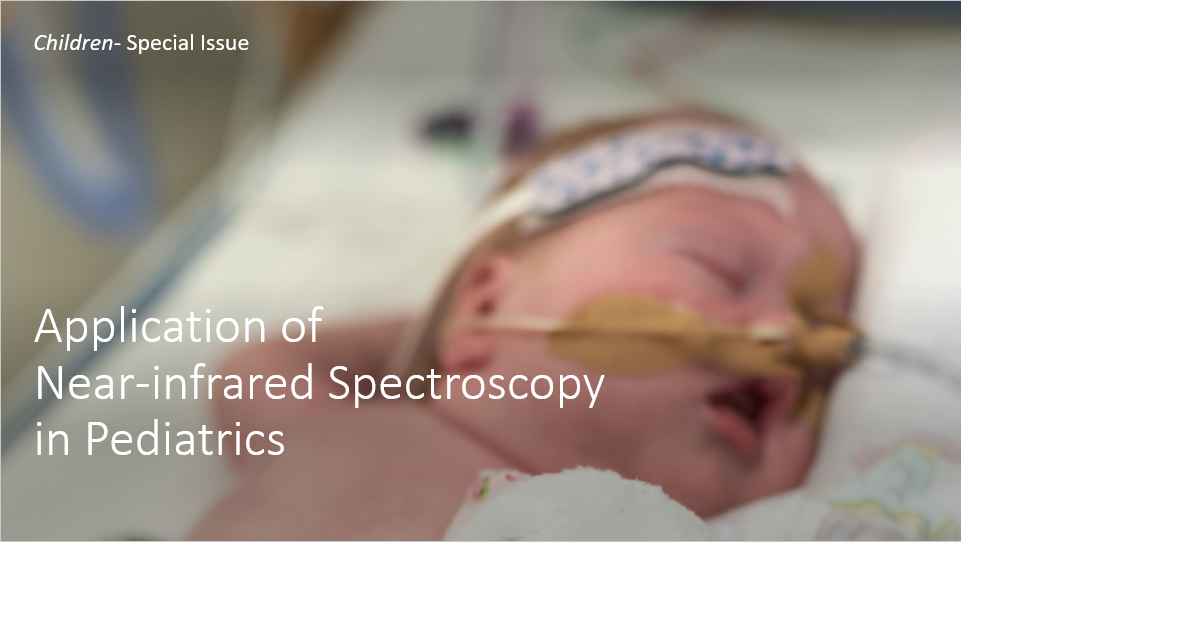- 2.1Impact Factor
- 3.8CiteScore
- 16 daysTime to First Decision
Application of Near-Infrared Spectroscopy in Pediatrics
This special issue belongs to the section “Pediatric Neonatology“.
Special Issue Information
Dear Colleagues,
Near-infrared spectroscopy (NIRS) allows for non-invasive assessment of end-organ oxygenation, making this technique especially suitable for neonates and children. Multiple NIRS applications have been described with regard to various neonatal and pediatric populations with various illnesses, and assessing multiple organs. The assessment of cerebral oxygenation has been studied widely, though evidence for effective clinical use in the pediatric population is still scarce. Using NIRS for the assessment for cerebrovascular autoregulation is gaining interest. Similarly, functional cerebral NIRS may add valuable information on cerebral perfusion to other neuroimaging techniques in children. For somatic use, the measurement of renal, intestinal, lung or muscle tissue oxygen saturation may potentially allow for the prediction of diseases or the efficacy and complications of therapy, as often seen in small cohorts. However, signal processing may be required prior to clinical application, and firm evidence for improved clinical outcomes when using somatic NIRS is still lacking. For this series of papers, we plan to include original research and review papers on the application of both cerebral and somatic NIRS in the neonatal and pediatric populations.
Dr. Elisabeth M. W. Kooi
Guest Editor
Manuscript Submission Information
Manuscripts should be submitted online at www.mdpi.com by registering and logging in to this website. Once you are registered, click here to go to the submission form. Manuscripts can be submitted until the deadline. All submissions that pass pre-check are peer-reviewed. Accepted papers will be published continuously in the journal (as soon as accepted) and will be listed together on the special issue website. Research articles, review articles as well as short communications are invited. For planned papers, a title and short abstract (about 250 words) can be sent to the Editorial Office for assessment.
Submitted manuscripts should not have been published previously, nor be under consideration for publication elsewhere (except conference proceedings papers). All manuscripts are thoroughly refereed through a single-blind peer-review process. A guide for authors and other relevant information for submission of manuscripts is available on the Instructions for Authors page. Children is an international peer-reviewed open access monthly journal published by MDPI.
Please visit the Instructions for Authors page before submitting a manuscript. The Article Processing Charge (APC) for publication in this open access journal is 2400 CHF (Swiss Francs). Submitted papers should be well formatted and use good English. Authors may use MDPI's English editing service prior to publication or during author revisions.
Keywords
- near-infrared spectroscopy
- neonatal/pediatric hemodynamics
- oxygenation
- functional NIRS
- tissue oxygen saturation
- cerebral autoregulation
- hypoxic-ischemic
- neonate/child

Benefits of Publishing in a Special Issue
- Ease of navigation: Grouping papers by topic helps scholars navigate broad scope journals more efficiently.
- Greater discoverability: Special Issues support the reach and impact of scientific research. Articles in Special Issues are more discoverable and cited more frequently.
- Expansion of research network: Special Issues facilitate connections among authors, fostering scientific collaborations.
- External promotion: Articles in Special Issues are often promoted through the journal's social media, increasing their visibility.
- e-Book format: Special Issues with more than 10 articles can be published as dedicated e-books, ensuring wide and rapid dissemination.

